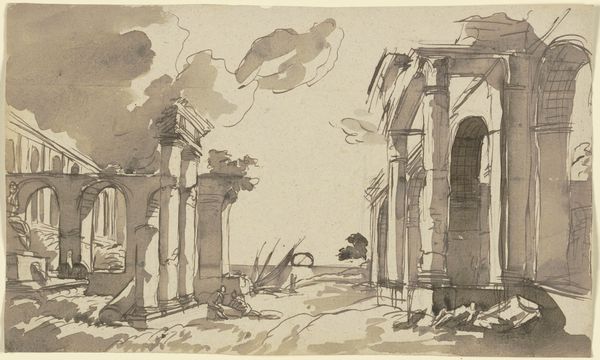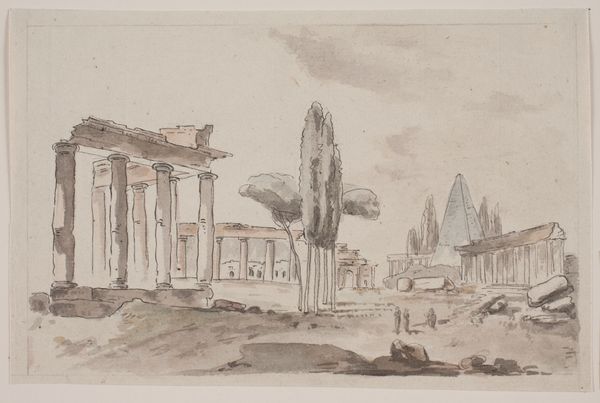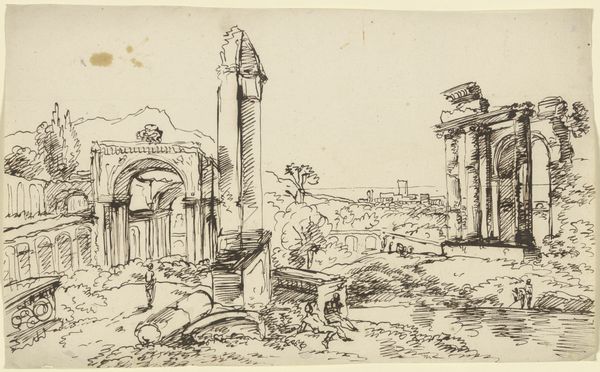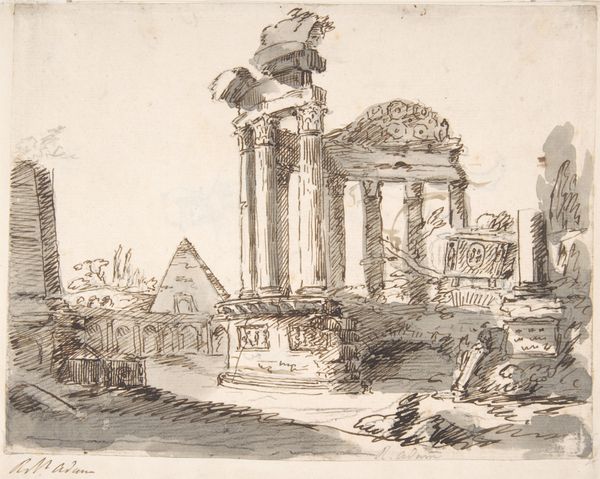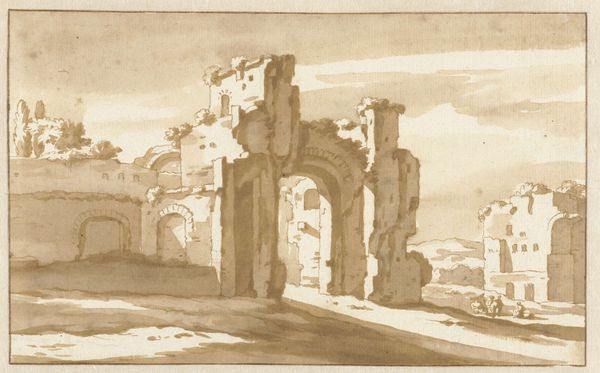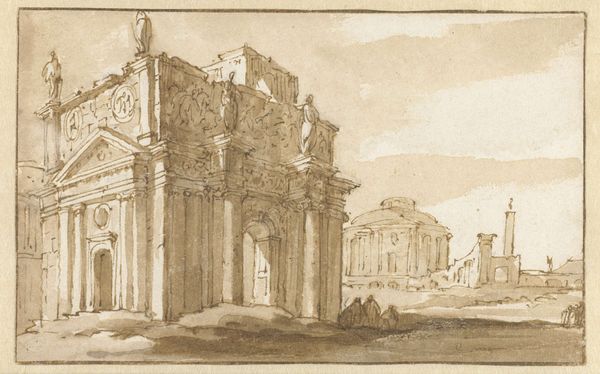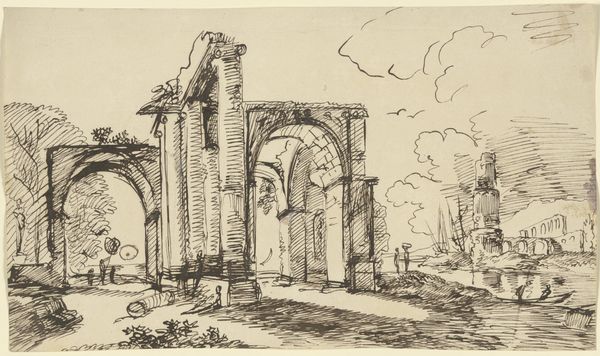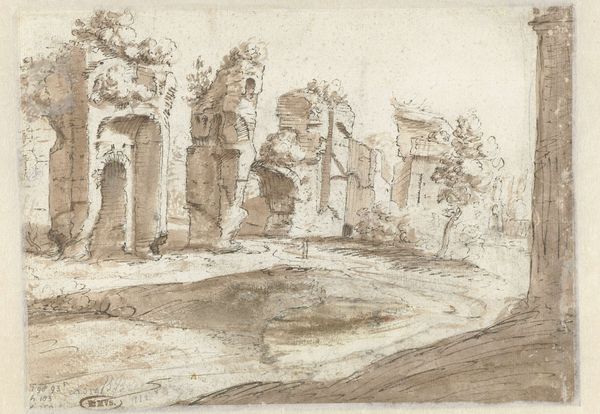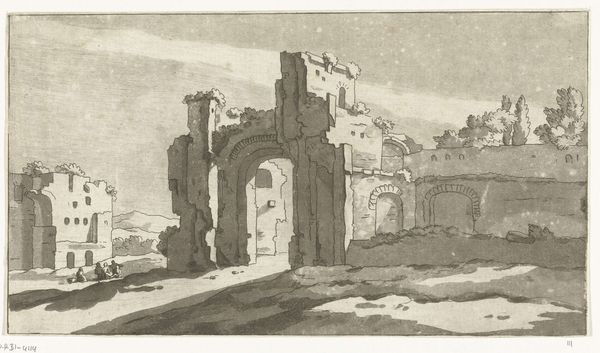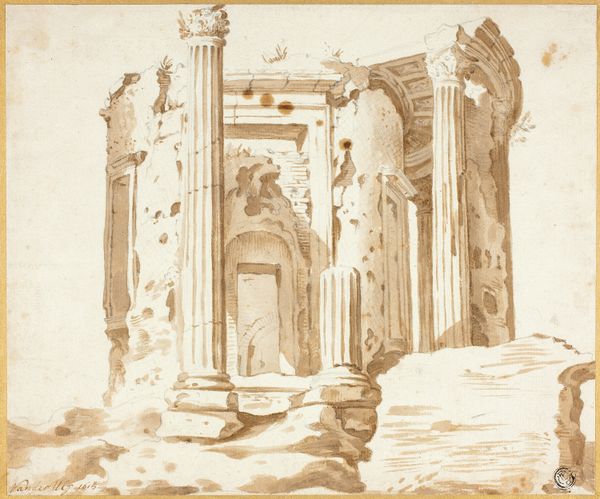
drawing, ink, pencil, frottage, architecture
#
drawing
#
ink drawing
#
pencil sketch
#
landscape
#
romanesque
#
ink
#
pencil
#
frottage
#
architecture
Copyright: Public Domain
Editor: Here we have Franz Kobell’s ink and pencil drawing, "Antike Ruinen in einer Landschaft," housed here at the Städel Museum. It feels rather melancholy to me. All these grand structures are slowly returning to dust. What do you make of it? Curator: Oh, melancholy is the right word. You can almost hear the whisper of ages gone by. It's that interplay between the solidity of the architecture and the transience of, well, everything else. Notice how Kobell uses the ink to suggest both the weight of the stones and their delicate decay. It’s a study in contrasts, isn't it? A visual poem about time. What kind of feelings rise up within you as you peer into the work? Editor: There is a strong contrast to the monumentality of these ruins. This grandeur suggests some sort of imperial force but nature is reclaiming them back slowly but surely. Do you think Kobell was trying to make some kind of statement here? Curator: Undoubtedly! I feel that he asks the viewers to ponder the vanity of human ambition when seen against the vast, indifferent backdrop of history. It’s Romanticism distilled: nature's sublime power to both create and obliterate, and humanity caught somewhere in the middle. Though that sounds too academic maybe. What does your gut tell you? Editor: My gut tells me that everything eventually crumbles. I guess what I'm taking from our discussion is Kobell isn’t necessarily making a statement, but prompting reflection about it. Curator: Exactly. It's not about answers but about stirring the soul a little, prompting us to gaze beyond our everyday horizons. Maybe a tiny part of ourselves will feel the passage of time, our memories flickering. What a journey we are invited to participate in simply by witnessing this humble ink sketch.
Comments
No comments
Be the first to comment and join the conversation on the ultimate creative platform.
